| Reports of visits to Japan of POWs |
Former Australian POWs visit Japan
at the invitation of the Japanese Government in 2011
| Courtesy Call on Minister for Foreign Affairs of Japan, Seiji Maehara |
| Exchange Meeting for Better Understanding |
Introduction
Five Australian ex-POWs and their family members (a total of ten people) visited Japan from March 1st to 9th, 2011 on the invitation of the Japanese government as part of the project "The Japanese/POW Friendship Programme".
Not many Japanese young generations know the fact that Japan fought against Australia during the Second World War. About 22,000 Australians became prisoners of war (POWs) under the Japanese army after the battles such as in Java and Singapore. Most of the POWs were sent to Japan and Southeast Asia like the Thai-Burma railway, so called the "Death Railway". About 8,000 of them died of the harsh labour, starvation and diseases. The death rate was as high as 36 per cent. The total number of Australian death in WW2 is about 19,000. The fact that the 40 per cent of them died as POWs under the Japanese army has put the dark shadow on Australian national history. Even the survivors have suffered from the scars on their bodies and hearts, and their anti-Japanese feelings spring from time to time.
With this historical background, Japanese government has invited personnel related to the Australian army from 1997 to 2005 under "The Japanese/POW Friendship Programme". However, ex-POWs were invited just once and their anti-Japanese feeling had been simmering.
Ever since around 2006, the fact that the company run by the relative of the then Foreign Minister Taro Aso used to use Koreans and Allied POWs as forced labour during the war was disclosed by British and Australian Media. Once he became the prime minister in September, 2008, he faced grilling in Diet sessions. In June, 2009, some of the POW RNJ members, civilians and congressmen who were interested in POW issues donated and invited an Australian ex-POW and a bereaved family of a British ex-POW to Japan, who were forced to work at Aso Mine. At the same time POW RNJ demanded that the Japanese government invite Australian ex-POWs and their families to Japan as a government operation. That's how this program came into existence.
Through their one-week stay, sincere apology by the then Foreign minister, Maehara, seemed to be the highlight to the ex-POWs. POW RNJ convened the assemblies in Kyoto and Tokyo and accompanied the trips to the internment camp sites. It was our great honour that all ex POWs were well and welcomed in each region. Two days after they left Japan with saying "It was a very fruitful trip", the earthquake hit Japan. It is fortunate that they didn't need to experience the earthquake.
Visiting members
Mr. Harold Ramsey
Born in 1921 (89 years old). Lives in Victoria.
Joined the Australian army at the age of 18. Involved in the action in the Middle East. Came back to Australia once, was sent to Java, was captured by the Japanese army and was interned in Changi. Forced to work at the Burma-Thai railway. On his way to Japan by Rakuyomaru, he was torpedoed by the US submarine and was sunk in the South China Sea on 12 September, 1944. Was rescued by a Japanese ship, then was interned to the Tokyo No.11 dispatched camp (later No.14 Branch camp, in Tsurumi ward, Yokohama city). Was forced to work at Toshiba Tsurumi factory. After the camp was destroyed by American airy bombing on 15 April, 1945, he was transferred to the Tokyo No.15 Branch camp in Niigata and worked at Niigata iron factory.
Accompanied by Mr. Stephen Ramsey (son).
Mr. Norman E Anderton
Born in 1921 (89 years old). Lives in Queensland.
Signalman of 8th Battalion, AIF. Got injured before the fall of Singapore on 13 February 1942 and became a POW at the hospital. Was forced to work at the Thai-Burma railway. The war came to the end while he was in Tambaya hospital camp in Burma (Myanmar). No experience to be interned in the camps in Japan but wishing to visit Hiroshima, a historical place that led to the end of the war and saved his life, and Kure where the Australian Army stayed for 7 years after the war.
Accompanied by Ms. Nichole (Nikki) Wood (niece).
Mr. Alfred John Simmonds (Jack)
Born in 1922 (88 years old). Lives in Queensland.
Became a POW in Singapore and was interned to Changi POW camp. Was transferred from Singapore to Moji by Kyokko Maru in May 1943. Was interned to the Osaka No.10 Branch camp (Taisho Branch in Shinchitose-machi, Taisho ward, Osaka city) and was forced to work for the Osaka iron factory (current Hitachi Zosen Harbour construction office). Was transferred to the Osaka No.7 Branch camp (2 Kitago, Takefu city, Fukui) in May 1945 and was forced to work for Shin-Etsu Chemical. Visited Japan in 2004 with Australian ex-POWs, Mr. Neil MacPherson and Mr.Jack Boon, and POW RNJ helped him visit the Commonwealth War Cemetery in Yokohama, Shin-Etsu Chemical in Takefu and Japan-Australia Society of Nara.
Accompanied by Ms. Dawn June Steindl (partner).
Dr. Charles Rowland Bromley Richards
Born in 1916 (94 years old). Lives in New South Wales.
Became a POW in Singapore, was sent to the Thai-Burma railway and tried to save the lives of POWs as a medical officer. Spent in Saigon, and on his way to Japan by Rakuyomaru, was torpedoed by US submarine and was sunk. Was rescued by a Japanese naval frigate, was interned to the Sendai No.9 Branch camp (Sakata city, Yamagata) and was forced to work at Sakata branch of Nippon Express. Published "A Doctor's War". Visited Japan in 1959 and had reunion with two civilians who were kind to him in Sakata. Has been searching for a captain of the Japanese naval frigate, who rescued him. Has gained some clues with the help of POW RNJ but his hope of meeting the captain or his families has not been realized yet. Made a speech at the seminar held at the Australian National University in Canberra under the auspices of the University and POW RNJ in 2006.
Accompanied by Dr. David Alexander Bromley Richards (the eldest son), Ms. Patricia Margaret Reed (partner), Ms. Maria Clare Richards(the wife of the eldest son). Ms. Lois Yvonne Richards (the wife of the second son) also accompanied at their own expenses.
Mr. GF (Fred) Brett
Born in 1925 (85 years old). Lives in Tasmania.
Was captured in Timor in 1942 and was interned in Changi POW camp. Was forced to work at the Thai-Burma railway. Was transferred to Fukuoka No.13 Dispached camp (in Saganoseki, Oita) in September 1944, after a two-month journey by Rashin maru, so called Byoki Maru (sick ship). Was forced to work for Saganoseki finery of Nihon Kogyo. The No.12 Dispatched camp closed down in June, 1945 and he was sent to the No.8 Dispatched camp (later called No.5 Branch camp, in Kawasaki, Fukuoka). Was forced to work at the coal pit of Omine mine of Furukawa Kogyo. Has been eager to visit Japan again and hope to be reunited with Mr. Harumi Mikawa in Saganoseki, a former guard and who was generous to him.
Accompanied by Mr. Robert Bennett (registered nurse).
Itinerary
| Tues, March 1st | 17:10 Arrived in Narita. (Stayed in Tokyo) |
| Wed, March 2nd | Orientation, Afternoon Tea hosted by Australian Ambassador. (Stayed in Tokyo) |
| Thurs, March 3rd | Courtesy Call on Minister of Foreign Affairs. Seminar hosted by Diet members for International IC. Exchange with local people. (Stayed in Tokyo)
Courtesy Call on Minister for Foreign Affairs of Japan, Seiji Maehara. >>Jump Seminar hosted by Diet Members' League to promote International Initiatives of Change. Were invited by a group of all-party diet members (Mr. Yukihisa Fujita as a moderator) and talked about their POW experiences. |
| Fri, March 4th | Visit the places of memorable significance to participants(Yokohama&Niigata / Hiroshima&Kure /Osaka / Sakata / Ooita) (stayed at the above locations)
Mr. Harold Ramsey Yokohama city (the Tokyo No.14 Branch camp, Toshiba Tsurumi factory) - Niigata city (the Tokyo No.15 Branch camp) Mr. Norman E Anderton Hiroshima city (Hiroshima Peace Memorial Museum) - Kure city *Mr. Anderton was not interned to the camps in Japan. Mr. Jack Simmonds Osaka city (Hitachi Zosen Harbour construction office) Dr. Rowley Richards Sakata city, Yamagata Pref. (Sendai No.9 Branch camp) Mr. Fred Brett Saganoseki, Oita (Saganoseki finery of Nihon Kogyo, Fukuoka No.13 Dispached camp) *No POWRNJ member accompanied. |
| Sat, March 5th | Kyoto (Ryozen Kannon/sightseeing/ meeting with community). (Stayed in Kyoto) |
| Mon, March 7th | Nara (Nara Catholic Church/sightseeing). Arrived in Tokyo in the afternoon. (Stayed in Tokyo) |
| Tues, March 8th | Visit the Commonwealth War Cemetery in Yokohama. Exchange Meeting with Japanese citizens hosted by POW RNJ. >>See the details (Stayed in Tokyo) |
| Wed, March 9th | Shopping. Departed Narita at 20:00. |
Courtesy Call on Minister for Foreign Affairs of Japan, Seiji Maehara.
Minister Maehara reiterated Japan's feelings of deep remorse and heartfelt apology for the tremendous damage and suffering inflicted on many people during the war, including former Australian prisoners of war. Minister Maehara presented each of the five former prisoners with copies of "individual records" used as identification cards and other relevant documents during their time in captivity. Minister Maehara noted that preparations would be started to hand over to the Australian side copies of all records kept in Japan since the end of the war, including "individual records" of Australian prisoners of war.
Dr. Charles Richards expressed deep appreciation on behalf of the Australian delegation, noting that the invitation represents a concrete way to express the feelings of apology of the Government of Japan. He stated that the delegation appreciated the return of the individual records, noting their significance not only for the former prisoners of war themselves but also their family members. Finally, he also said that the visit would contribute to the enhancement of friendly relationship between Japan and Australia.
"MOFA: Invitation to Japan to Former Australian Prisoners of War To Japan." >>Link
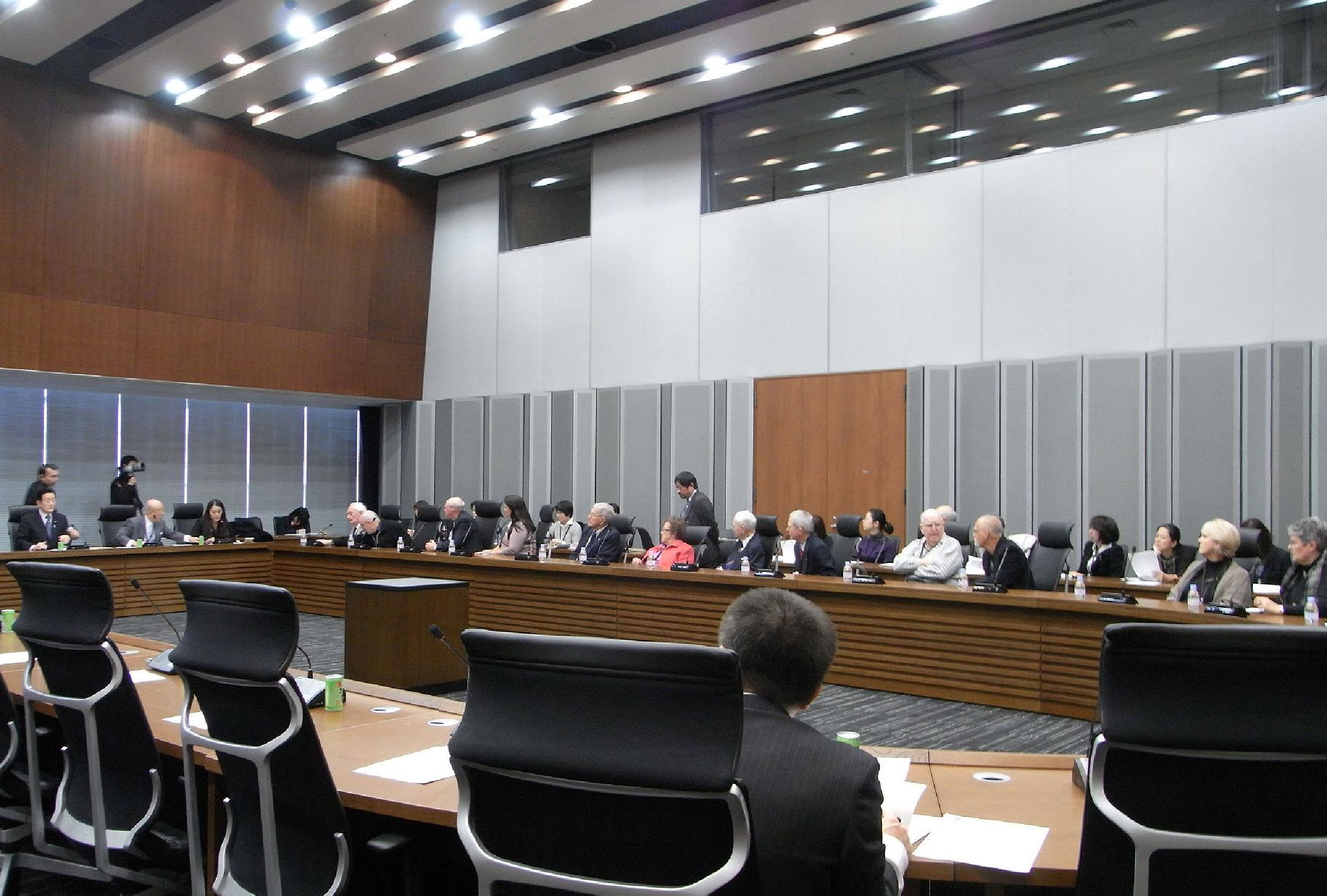
|
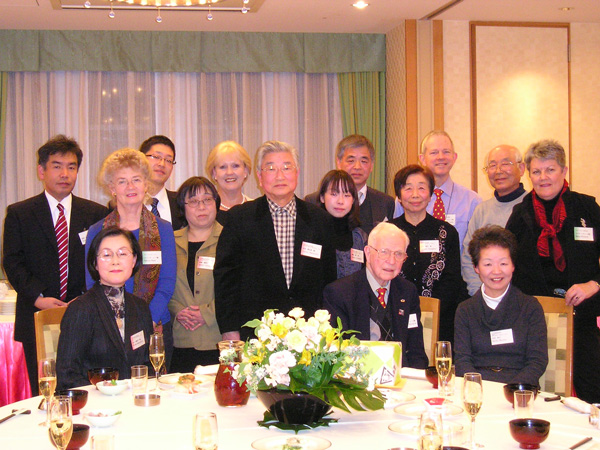
|
|
Seminar hosted by a group of all-party diet members |
The local people in Sakata welcomed Dr.Richards |
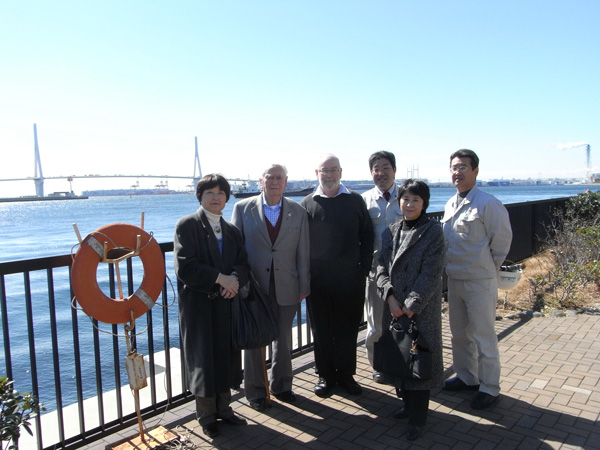
|
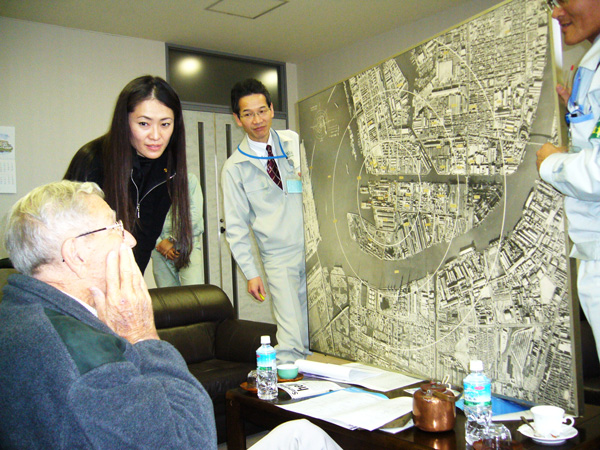
|
|
Mr.Ramsey visited Toshiba Tsurumi Factory in Yokohama |
Mr.Simmonds visited Hitachi Zosen in Osaka |
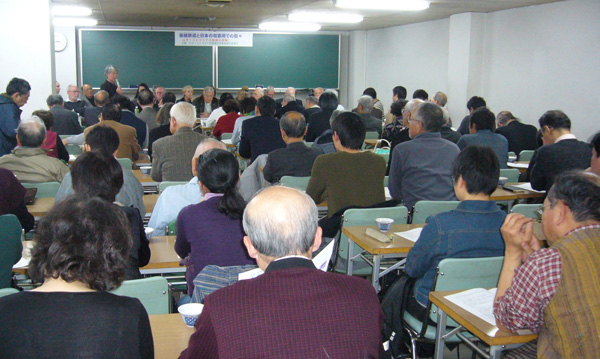
|
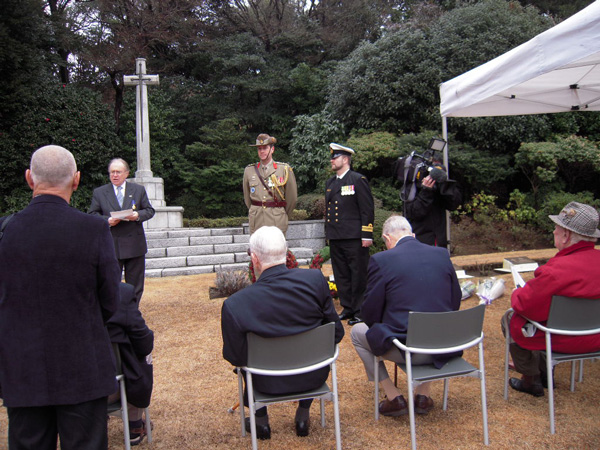
|
|
Exchange Meeting with Japanese citizens in Kyoto |
Visited the Commonwealth War Cemetery in Yokohama |
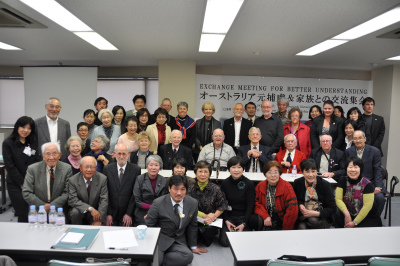
|
|
Exchange Meeting for Better Understanding in Tokyo hosted by POW RNJ |